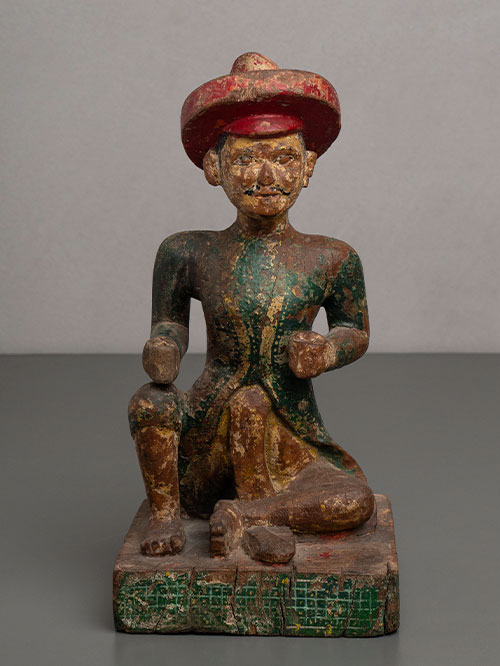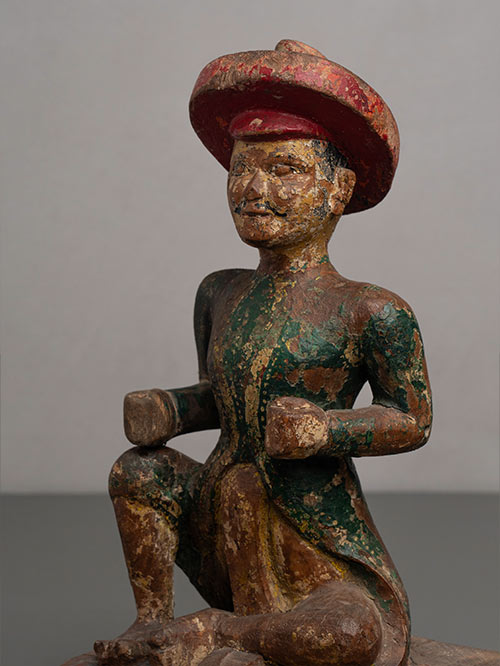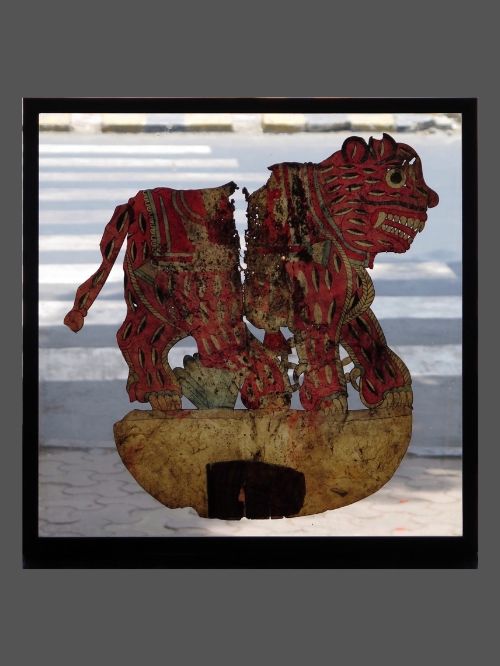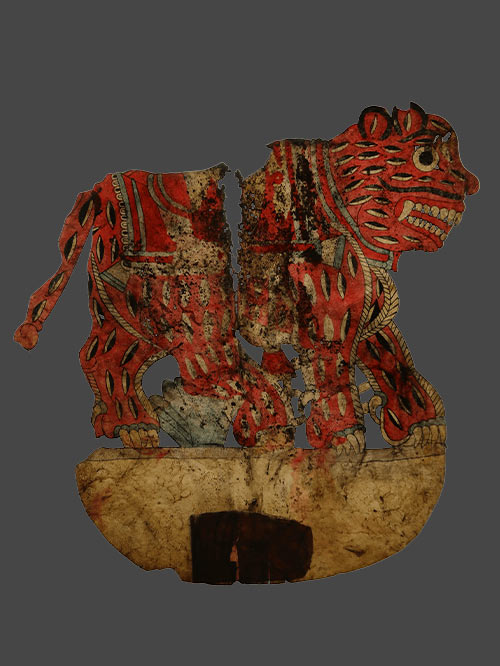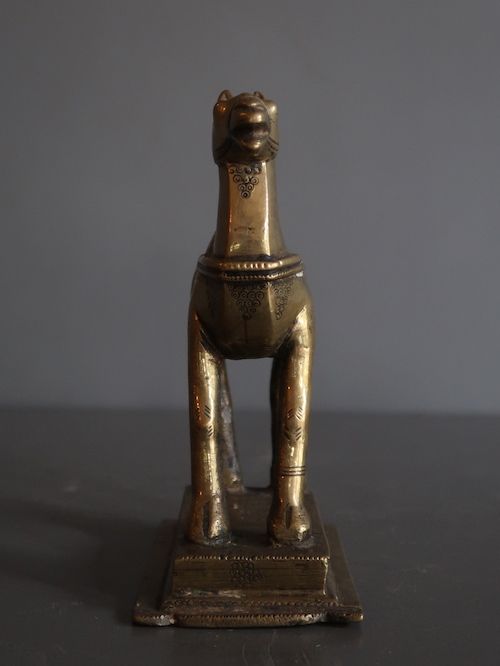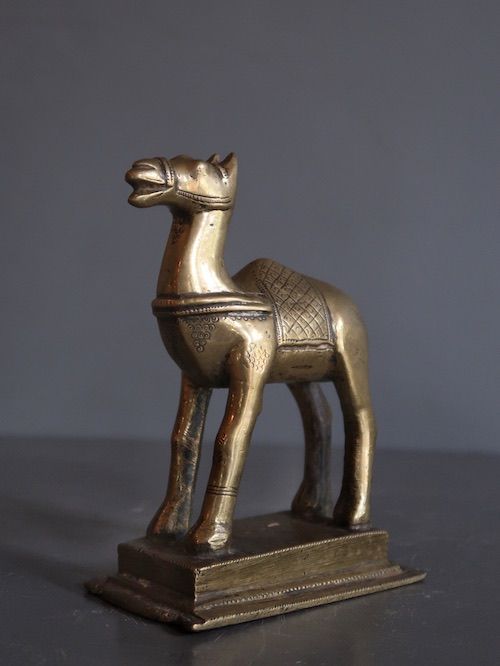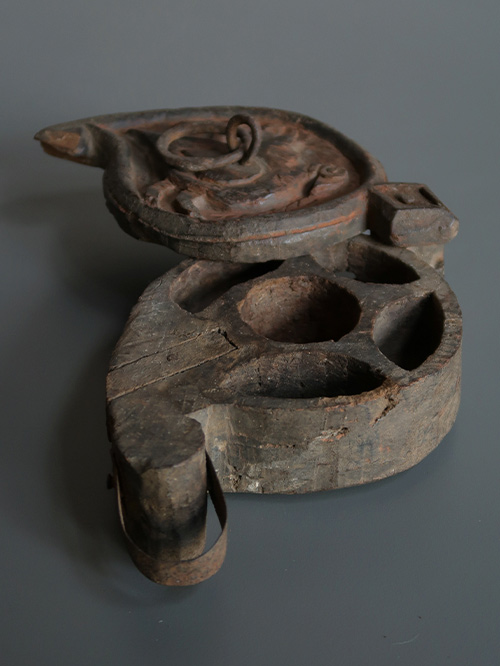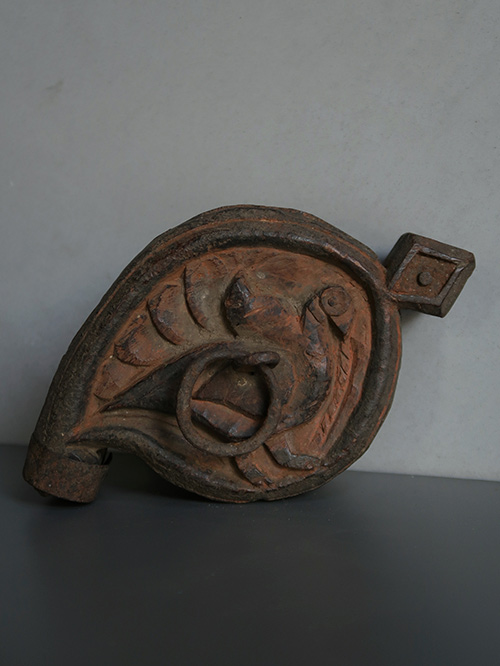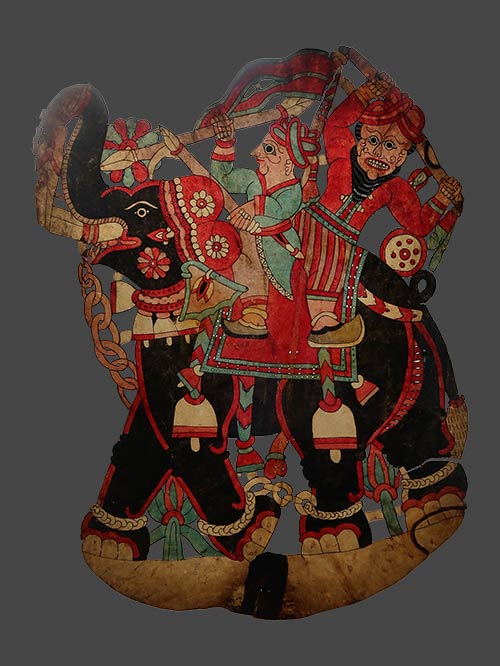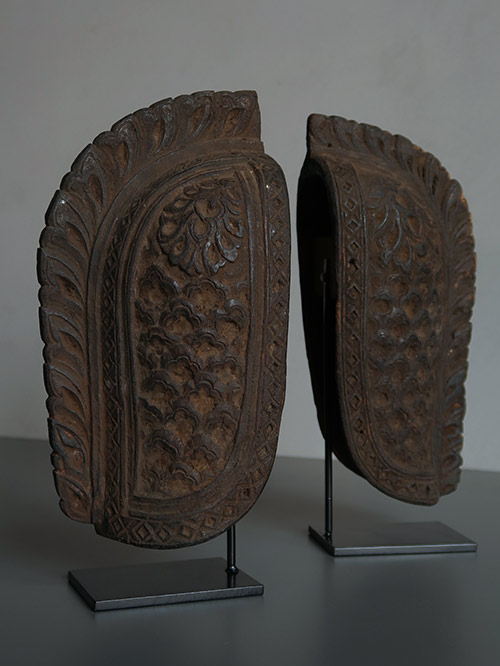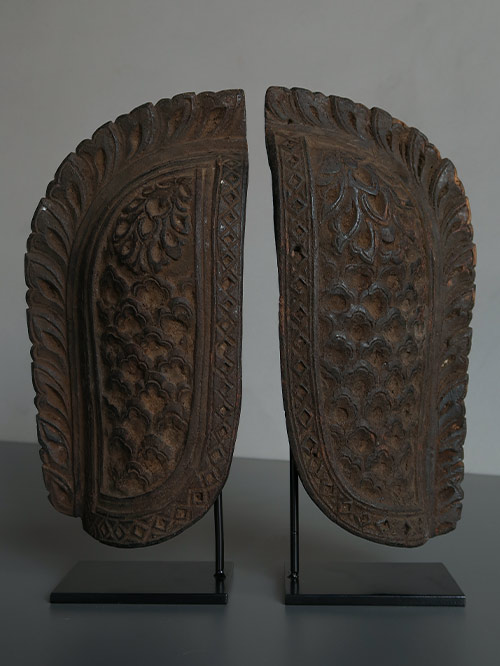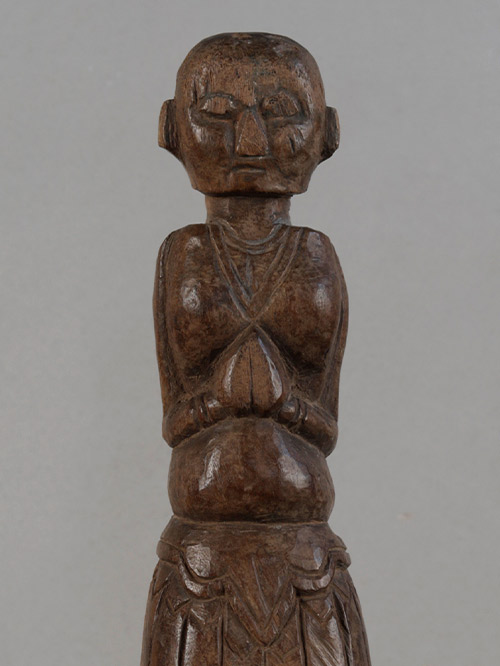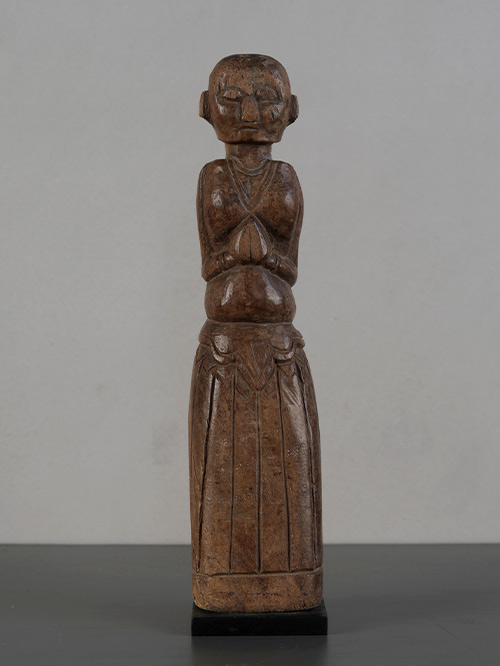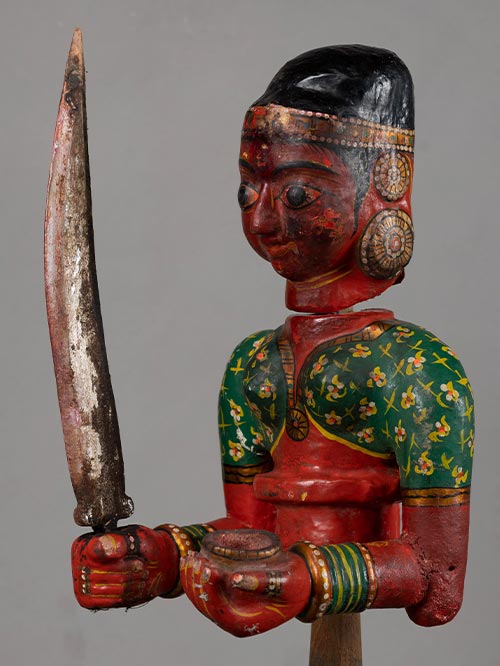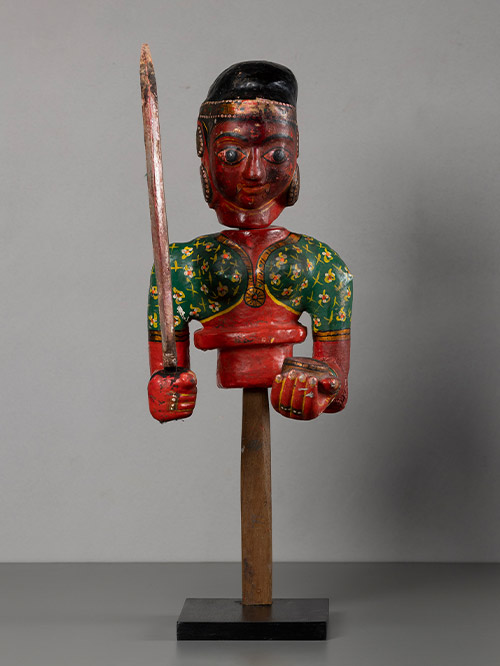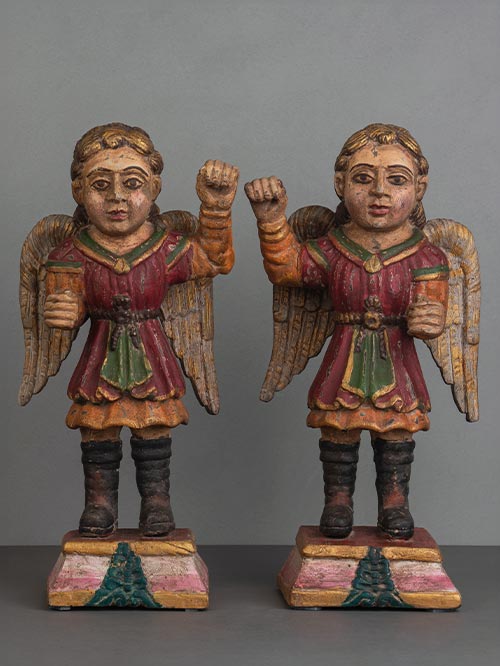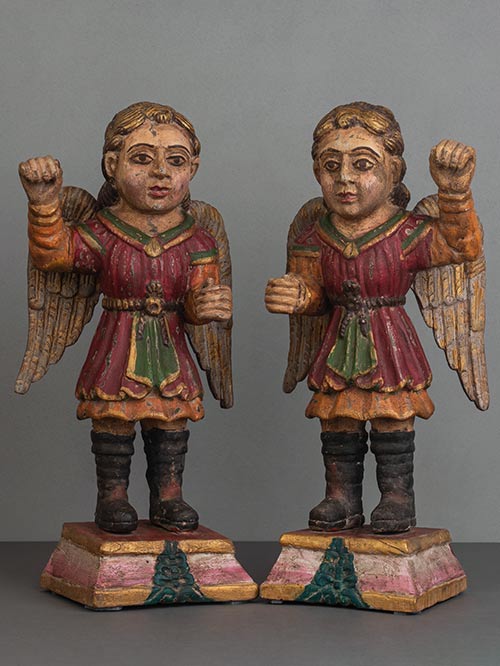Western India
Wood, polychromed
The weathered figure of the seated Maratha retains much of its original polychroming, giving it a distinct character. In the pose of Lalitasana, he exudes a serene confidence, suggesting a man comfortable in his surroundings. He is adorned in a patterned green muslin coat secured with a white sash, along with a matching white dhoti and a vibrant red Maratha-style turban. Though his hands, clenched in fists, now rest empty, they convey a sense of strength and resolve.
This figure, made by an Indian craftsman, was probably produced at a centre near Poona (Pune). Like Company School paintings, these highly naturalistic sculptures prefigure photography and were made as souvenirs for Western patrons as early as the 1820s. They depict people of different Indian communities, garbed in their traditional attire, and engaged in their professions. While sometimes made from wood, they were primarily made from a soft clay. Krishnagar, a village near Calcutta was the first and largest centre. Over time, figurines were made at Hatwa, Datan (near Saran), Muzaffar-pur, Dacca, Burdwan, and later, Lucknow and Poona. 18th and 19th century Neopolitan creche figures may have served as the inspiration for East India company officials to commission Indian variations of the figurines.
Size (cms): 29(H) x 14.5(W) x 13.5(D)
Size (inches): 11.5(H) x 5.5(W) x 5.5(D)

